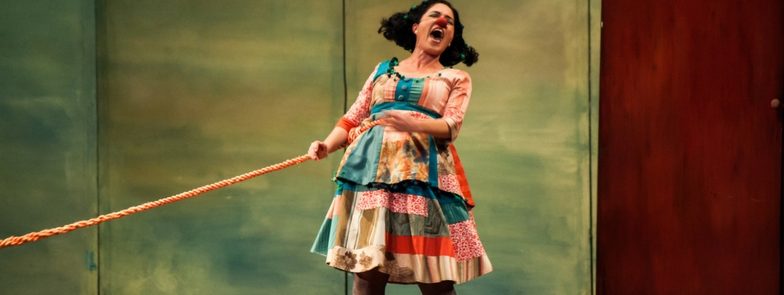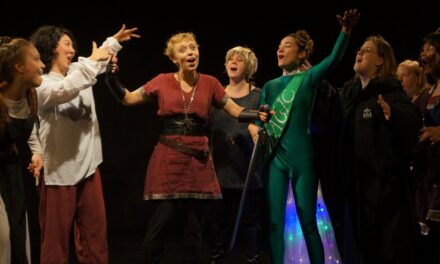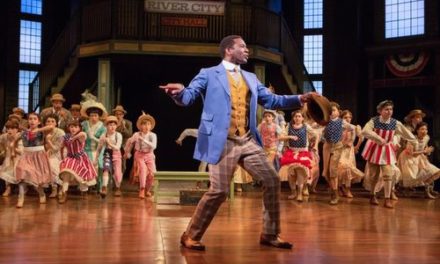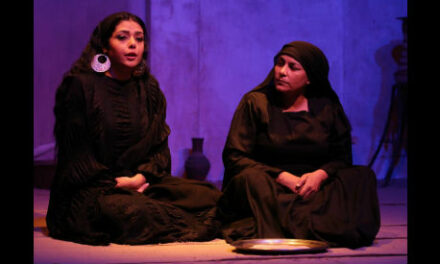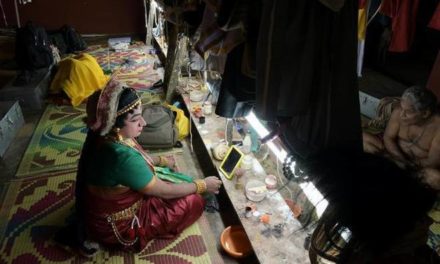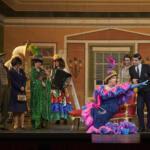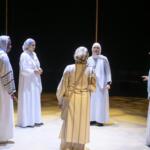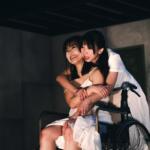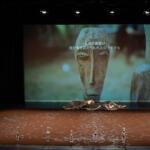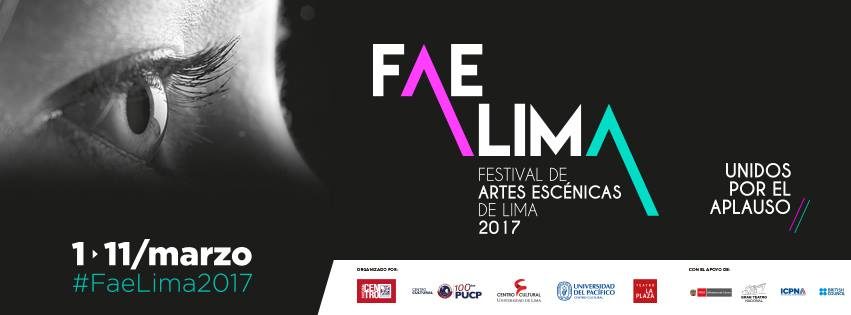
Courtesy of the Festival de Artes Escénicas-Lima, Perú
The Festival de Artes Escénicas/Festival of Scenic Arts (FAE) is making its return to Lima, Peru during the dates of March 1 through 11. Nineteen works of theatre and performance art will be presented in venues across the city representing not only Peru’s theatrical talent, but artists throughout Latin America and the world. The theme of this years’ event is ‘Unidos por el aplauso,’ or ‘United for applause’ which, in the words of this year’s Artistic Director, Marisol Palacios, encapsulates the festival’s goal of international artistic exchange. Click here for full program. As Palacios states in an interview with La república, ‘Peru needs a festival where the public and artists arrange to meet with one another and celebrate and enjoy our diversity.’ While the festival celebrates Peruvian theatre, it also intends “to motivate and promote the internationalization of our [Peruvian] artists” [1]. These inspirational goals have been met with the generous financial support of the city’s main cultural and financial organizations, as the festival’s long list of contributors demonstrates. All in all, the festival will bring theatre center stage in Lima’s cultural arena, highlighting Peru’s theatrical sleeper talent in a manner that only occurs a few times a year.
The festival will showcase the following pieces of theatre and performance art:
Peruvian
Curandero, limpia escénica, a work of collective creation
- A lovelorn longshoreman of Parada seeks answers in urban folk-healing, which ends up becoming his obsession and transforming him into another being
El análisis, directed by Franco Iza
- A theatre director must undergo therapy to see his son and grandson. Now that he no longer wants to speak, the psychologist makes him act out La vida es sueño by Calderón.
El día que cargué a mi madre, a work of collective creation directed by Paloma Carpio
- An interdisciplinary piece in which a mother and a daughter tell their own stories and share what has united them and what keeps uniting them in adulthood
El anhelo de Juan, directed by Leonor Estrada
- In 1988, Juan the child wants to understand his family and the adult world. He finds his accomplice in his uncle Juan, an old man exiled from his own life.
Katrina Kunetsova y el clítoris gigante, directed by Patricia Romero
- A famous porno actress retires and shares her stories about terrible love relationships, a medical treatment, and the miracle that transformed her forever
Los regalos, by the Compañía de Teatro Físico, directed by Fernando Castro
- When a single father and his two male children live in a house without women, daily chores become adventures for the inexperienced father.
Realideal, directed by Diego Gargurevich
- A contemporary circus spectacle where a group of women share their dreams, their fears, and their struggle to construct their own identities.
Lunarios, directed by Augusto Navarro
- A multidisciplinary work that shows three women in pilgrimage to ancestral spaces and each carries with her a wound, an offering, and hope.
La vendedora de fósforos, directed by Guillermo Castrillón
- A version of the story “La pequeña vendedora de fósforos” by Hans Christian Anderson that will attempt to bring us closer to the child that adults hold inside
Cuerda, directed by Nishme Súmar
- A female clown tied with a rope speaks about the subject she masters: herself. She takes us on a journey through her life where we recognize our own hold-ups.
Ausentes-Proyecto escénico, directed by Rodrigo Benza
- When police and protester deaths are produced in the middle of a social conflict, who are the responsible parties? Could the deaths have been avoided?
International
Las ideas, directed by Federico León (Argentina)
- Between the limits of reality and fiction, what begins as an encounter between two friends, an artist and a collaborator, becomes an intense day of creative work
¡Afuera!, by the group Los Tocomochos, directed by Ignacio Koornstra (Argentina)
- A guy from the city tells a country story. Some events are drawn from the novel Don Segundo Sombra, the story of a young man thrown into oblivion.
Los autores materiales, by the group La Maldita Vanidad Teatro, directed by Jorge Hugo Marín (Colombia)
- Sebas, Julián, and el Negro need to decide what to do with the landlord’s body, who they accidentally killed when he demanded their late rent.
Hilda Peña, directed by Aliocha de la Sotta (Chile)
- Hilda Peña’s son has died in a bank robbery. A small piece of history far from the official story about the transition to democracy in Chile.
Tebas Land, directed by Sergio Blanco (Uruguay)
- A dramatist and an actor representing a young patricidal murderer try to bring to life the meetings that never occurred between the author and the real parent-killer.
Son, by Nova Galega de Danza, directed by Jaime Pablo Diaz and Carlos Rodríguez (Spain)
- Nova Galega presents an innovative spectacle of dance that fuses contemporary dance, traditional Galician dance, Spanish dance, and Flamenco
Antígona recortada-Historias que hablan sobre el lugar donde se posan los pájaros, del Núcleo by Bartolomeu de Depoimentos, directed by Cláuda Schapira (Brazil)
- A work of theatre hip-hop based on Antigone. Presented with the execution of their brothers who have been implicated in drug trafficking, a group of young women perform an act of resistance.
Dance laboratory presentation, conducted by Lea Anderson and sponsored by the British Council (United Kingdom)
- During the close of the festival, the British dance teacher Lea Anderson will present the results of the dance laboratory [2]
The Festival de Artes Escénicas’ Facebook page: https://es-la.facebook.com/faeLimaoficial/
Notes
[1] Translated from https://larepublica.pe/turismo/cultural/846266-el-festival-de-artes-escenicas-de-lima-regresa-en-marzo
[2] Translations of play synopses are the work of the author of this article. All are found in original Spanish form on the official festival program.
This post was written by the author in their personal capacity.The opinions expressed in this article are the author’s own and do not reflect the view of The Theatre Times, their staff or collaborators.
This post was written by Mary Barnard.
The views expressed here belong to the author and do not necessarily reflect our views and opinions.

